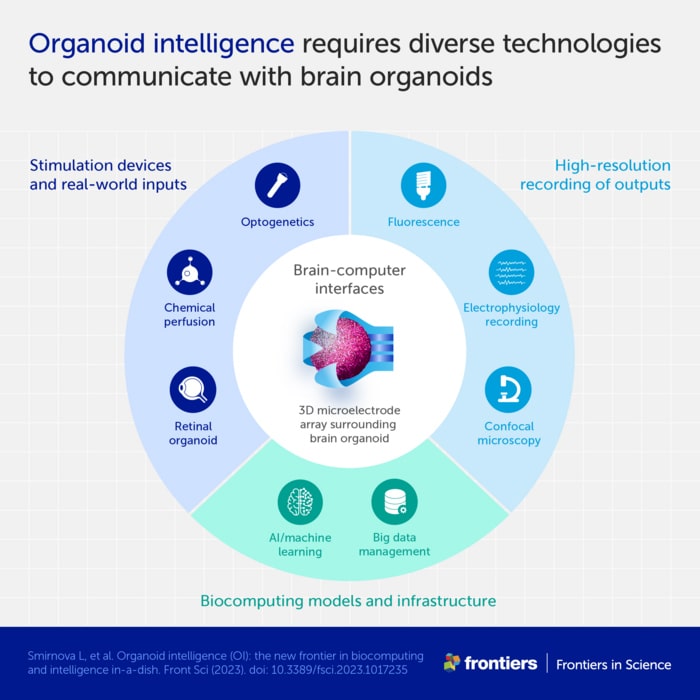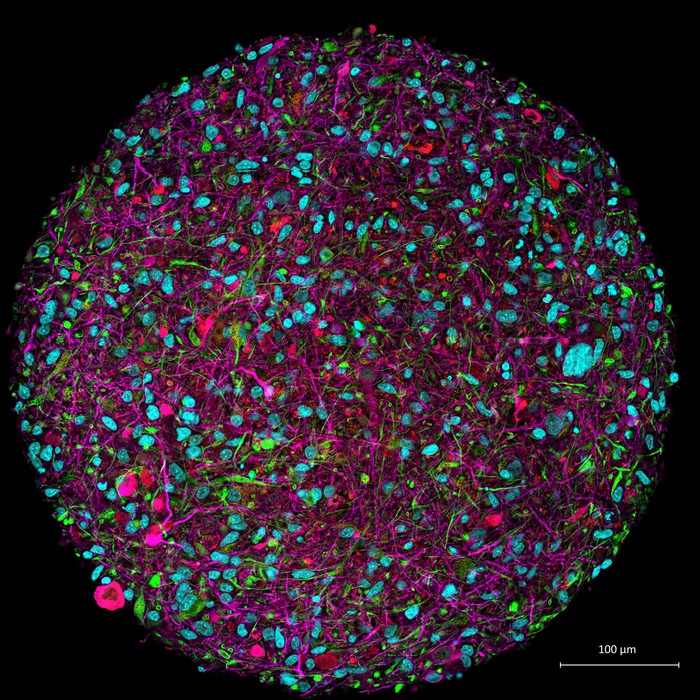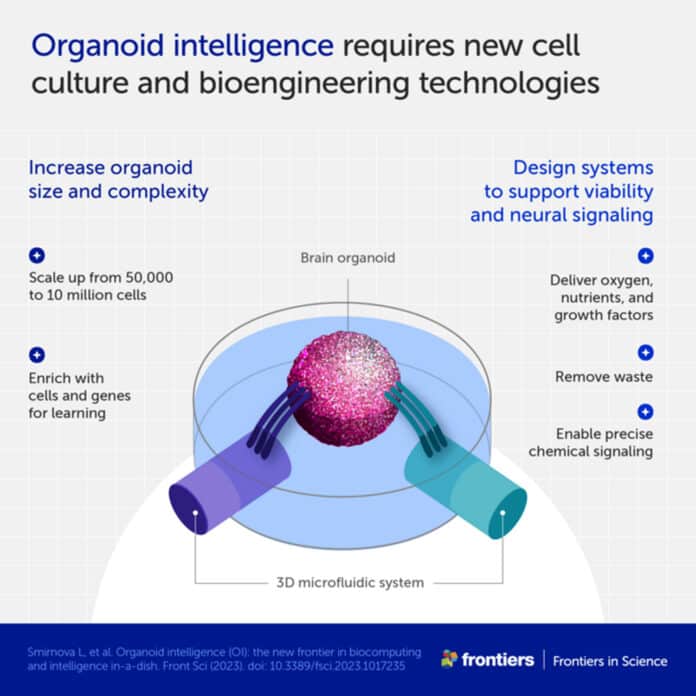The human brain has long inspired artificial intelligence (AI). This method was incredibly successful: AI boasts tremendous achievements – from diagnosing medical disorders to producing poems. However, the original design still performs better than machines in many areas.
Recent advances in human stem cell-derived brain organoids promise to replicate critical molecular and cellular aspects of learning and memory and possibly aspects of cognition in vitro. This new interdisciplinary field is known as ‘organoid intelligence’ (OI).
A community of top scientists has gathered to develop this technology, which is believed to launch a new era of fast, powerful, and efficient biocomputing.

An example of laboratory-grown cell culture is brain organoids. Although brain organoids are not “little brains,” they share essential brain structure and function characteristics, including neurons and other brain cells crucial for cognitive processes like memory and learning. Furthermore, organoids have a three-dimensional structure, whereas most cell cultures are flat. The culture’s cell density is increased 1,000-fold, allowing for the formation of many more connections between neurons.
But even if brain organoids are a good imitation of brains, why would they make good computers? After all, aren’t computers smarter and faster than brains?
Prof Thomas Hartung of Johns Hopkins University said, “While silicon-based computers are certainly better with numbers, brains are better at learning. For example, AlphaGo [the AI that beat the world’s number one Go player in 2017] was trained on data from 160,000 games. A person would have to play five hours a day for more than 175 years to experience these many games.”
Not only are brains better at learning, but they also use less energy. For instance, more energy is expended teaching AlphaGo than required to support an active adult for ten years.
Hartung said, “Brains also have an amazing capacity to store information, estimated at 2,500TB. We’re reaching the physical limits of silicon computers because we cannot pack more transistors into a tiny chip. But the brain is wired completely differently. It has about 100bn neurons linked through over 1015 connection points. It’s an enormous power difference compared to our current technology.”

“Current brain organoids need to be scaled up for OI. They are too small, each containing about 50,000 cells. For OI, we would need to increase this number to 10 million.”
In addition, the authors are working on technology that will allow them to transmit the organoids information and read out what they are “thinking.” The authors intend to create novel stimulation and recording devices as well as modify techniques from other scientific fields, including bioengineering and machine learning.
Hartung said, “We developed a brain-computer interface device that is a kind of an EEG cap for organoids, which we presented in an article published last August. It is a flexible shell densely covered with tiny electrodes that can both pick up signals from the organoid and transmit signals to it.”
“Eventually, OI would integrate a wide range of stimulation and recording tools. These will orchestrate interactions across networks of interconnected organoids that implement more complex computations.”
The promise of OI extends to medical as well as computing. Brain organoids can now be created from adult tissues thanks to a ground-breaking method created by Noble Laureates John Gurdon and Shinya Yamanaka. This indicates that scientists can create customized brain organoids from skin samples taken from people with neurological illnesses like Alzheimer’s disease. Afterward, they can perform various tests to examine how chemicals, drugs, and genetic factors may affect these disorders.
Hartung said, “With OI, we could study the cognitive aspects of neurological conditions as well. For example, we could compare memory formation in organoids derived from healthy people and Alzheimer’s patients and try to repair relative deficits. We could also use OI to test whether certain substances, such as pesticides, cause memory or learning problems.”
Complex ethical issues are brought up by the development of human brain organoids that can remember things and interact with their surroundings. Could they, for instance, achieve consciousness, even in a primitive form? Might there be pain or suffering for them? And what rights would individuals have with respect to brain organoids created using their cells?
Hartung said, “A key part of our vision is to develop OI ethically and socially responsibly. For this reason, we have partnered with ethicists from the beginning to establish an ’embedded ethics’ approach. All ethical issues will be continuously assessed by teams of scientists, ethicists, and the public, as the research evolves.”
OI is still in its early stages, but a newly released study by Dr. Brett Kagan of the Cortical Labs, one of the article’s co-authors, offers proof of concept. His team demonstrated that a normal, flat brain cell culture could learn to play the video game, Pong.
Hartung added, “Their team is already testing this with brain organoids. And I would say that replicating this experiment with organoids already fulfills the basic definition of OI. From here on, it’s just a matter of building the community, the tools, and the technologies to realize OI’s full potential.”
Journal Reference:
- Lena Smirnova, Brain Caffo et al. Organoid intelligence (OI): the new frontier in biocomputing and intelligence-in-a-dish. Frontiers in Science. DOI: 10.3389/fsci.2023.1017235
